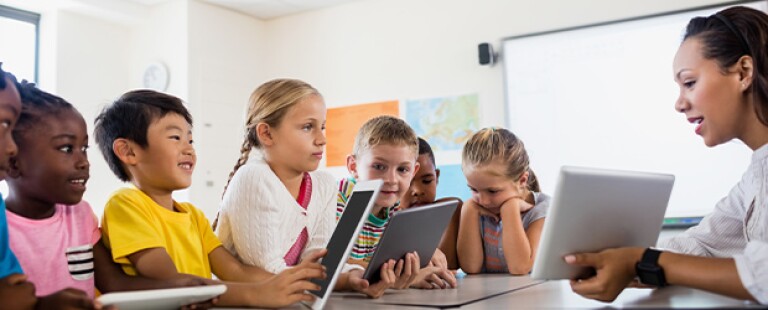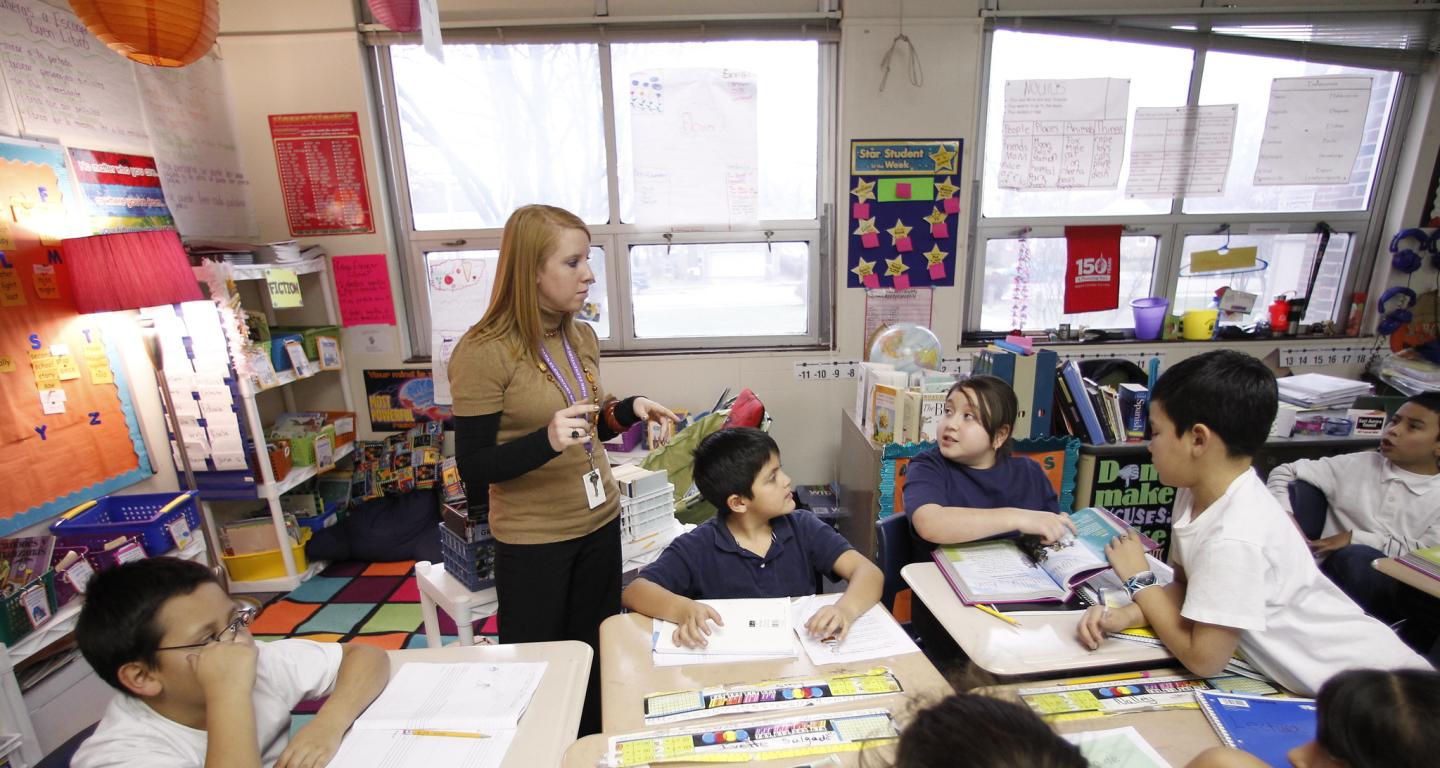Boost Your Child’s Confidence with Primary Science Tuition Singapore
Boost Your Child’s Confidence with Primary Science Tuition Singapore
Blog Article
Discovering the Various Training Techniques in Key Science Education And Learning Today
Inquiry-based discovering, hands-on experiments, and the integration of modern technology are redefining just how instructors engage young minds. Furthermore, collective approaches and set apart direction are being employed to provide to the diverse requirements of pupils, enhancing both involvement and understanding.
Inquiry-Based Learning
Inquiry-Based Discovering (IBL) is an instructional approach that urges trainees to check out scientific concepts via wondering about, investigation, and hands-on testing. This method emphasizes the duty of students as energetic individuals in their discovering, promoting critical thinking and problem-solving skills. By involving with real-world concerns, pupils become interested and inspired, which enhances their understanding of clinical concepts.
In IBL, teachers work as facilitators, assisting trainees as they browse their questions instead than delivering details straight. This student-centered strategy enables differentiation, suiting numerous finding out rates and designs. Pupils develop skills in developing hypotheses, designing experiments, and assessing data, which are crucial for scientific proficiency.
Furthermore, IBL cultivates collaboration amongst students, encouraging them to share searchings for and ideas. This cumulative inquiry advertises social abilities and a sense of area within the class. Moreover, the process of questions urges durability, as pupils discover to accept failing as a stepping stone toward understanding.
Hands-On Experiments
Hands-on experiments are a vital part of reliable scientific research education, enhancing the principles of inquiry-based discovering. These experiments allow trainees to involve directly with scientific concepts, promoting a much deeper understanding through experiential knowing. By controling materials and observing end results, young learners can grasp abstract concepts in substantial ways.
Such activities advertise crucial thinking and analytical abilities, as pupils hypothesize results, conduct experiments, and examine outcomes. This procedure motivates them to ask concerns, refine their understanding, and establish a scientific attitude. In addition, hands-on experiments can be customized to varied understanding designs, making certain that all students have the chance to involve meaningfully with the web content.
In addition, hands-on experiments frequently urge cooperation among peers, promoting teamwork and communication skills. Working in teams makes it possible for trainees to share concepts, go over findings, and pick up from one another, which enhances their overall instructional experience.
Integrating hands-on experiments into the key science educational program not only improves the discovering atmosphere yet likewise grows a lifelong passion in scientific research. By proactively taking part in their education, students are more most likely to establish an interest for clinical query that extends beyond the classroom.

Modern Technology Combination
Integrating technology right into key science education and learning has actually become progressively crucial in fostering student interaction and improving learning results. Making use of electronic devices, such as interactive simulations, digital laboratories, and instructional software application, provides trainees with opportunities to discover scientific principles in ingenious means. These sources help with a deeper understanding of complex subjects by allowing learners to imagine and control variables that would certainly be impractical in a typical classroom setup.
In addition, modern technology combination motivates individualized discovering experiences. Pupils can proceed at their own speed, taking another look at tough principles with multimedia sources, which cater to different knowing styles. This adaptability not just sustains private development however likewise grows a feeling of freedom in learners.
In addition, technology functions as a bridge to real-world science, connecting students with current research study and professional contributions. Accessibility to on-line data sources and scientific journals widens pupils' viewpoints on scientific questions and promotes essential assuming skills.
Collaborative Knowing
Collective knowing plays a vital function in primary science education and learning by cultivating team effort our website and communication skills among students. This method encourages students to function with each other, share understanding, and engage in analytic, which boosts their understanding of clinical concepts. websites By taking part in group activities, trainees find out to verbalize their ideas, pay attention to diverse viewpoints, and discuss options, all of which are necessary skills in both real-world and academic contexts.

Research suggests that joint discovering can result in increased inspiration and interaction in scientific research topics, as trainees find satisfaction in shared experiences (primary science tuition Singapore). Additionally, this approach prepares pupils for future joint endeavors, equipping them with the skills required for effective synergy in college and professional atmospheres. Ultimately, accepting collaborative understanding in key science education and learning can considerably enrich the knowing experience and advertise a much deeper understanding of scientific query
Separated Direction

Differentiated guideline can manifest in different ways, such as differing the content, processes, or products of learning. Teachers might make use of tiered assignments that provide varying degrees of complexity, allowing students to work at their corresponding readiness levels. Furthermore, versatile grouping strategies can promote partnership among students with various capabilities, fostering peer understanding.
Analysis plays an important role in this approach, as it educates direction and primary science tuition Singapore aids instructors understand each pupil's special needs. Developmental assessments, such as tests and monitorings, can guide instructors in readjusting their approaches to enhance discovering end results. primary science tuition Singapore. Inevitably, by applying set apart direction in main scientific research education, teachers can cultivate a much more effective and equitable knowing atmosphere, encouraging all students to reach their complete capacity in recognizing clinical sensations
Conclusion
In recap, the diverse teaching approaches in primary science education and learning, consisting of inquiry-based knowing, hands-on experiments, technology assimilation, collective discovering, and distinguished guideline, jointly add to an extra reliable discovering atmosphere. These techniques advertise essential reasoning, analytic skills, and a deeper comprehension of scientific concepts. By executing these techniques, educators can develop appealing and encouraging class that address the varied demands of pupils, ultimately cultivating a lifelong interest in scientific research and enhancing scholastic accomplishment.
Inquiry-Based Knowing (IBL) is an instructional method that urges pupils to check out clinical principles via questioning, examination, and hands-on trial and error.Joint understanding plays an important function in primary science education by promoting teamwork and communication skills among trainees.Research study indicates that joint knowing can lead to increased motivation and interaction in science topics, as students find enjoyment in shared experiences.In cultivating a comprehensive discovering atmosphere, set apart direction arises as a key method to accommodate the diverse requirements and capacities of trainees in key scientific research education. Ultimately, by implementing differentiated direction in primary scientific research education and learning, educators can cultivate an extra reliable and equitable discovering setting, empowering all trainees to reach their complete capacity in recognizing scientific sensations.
Report this page